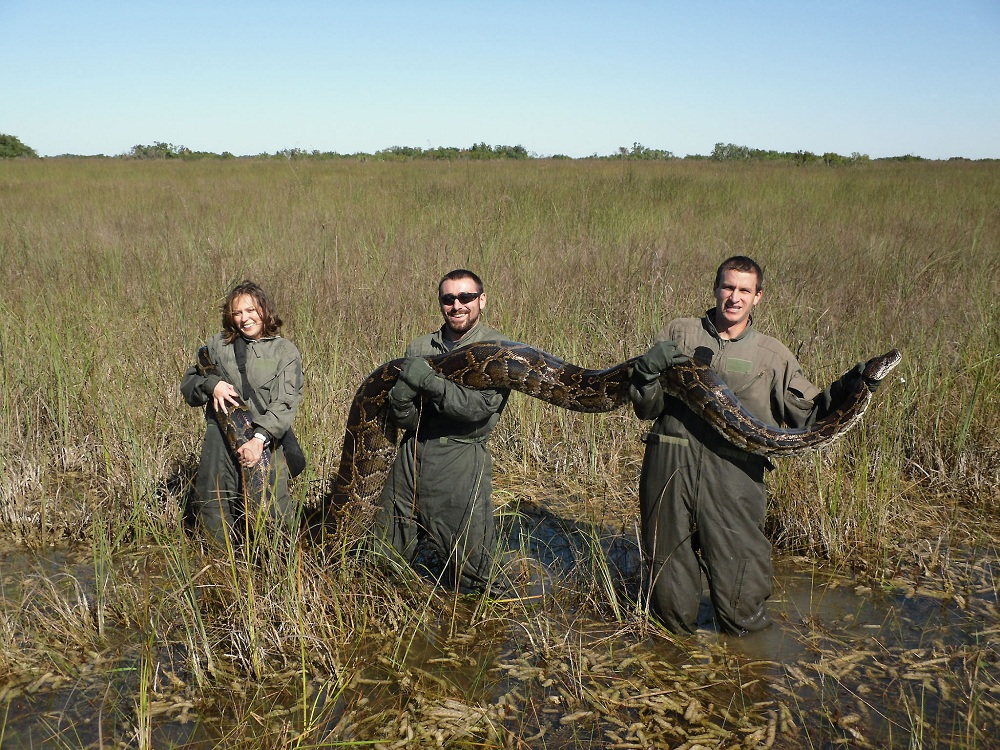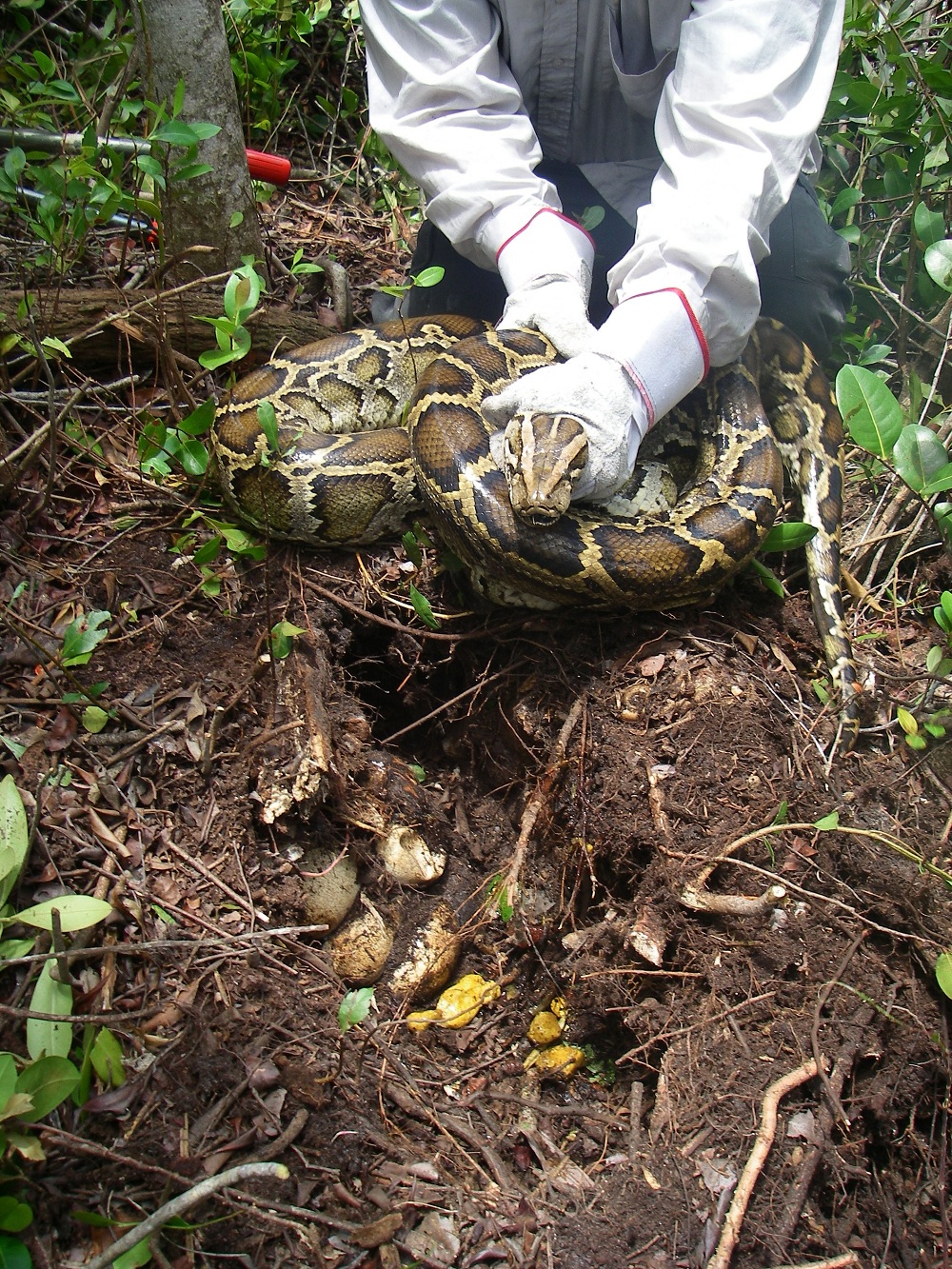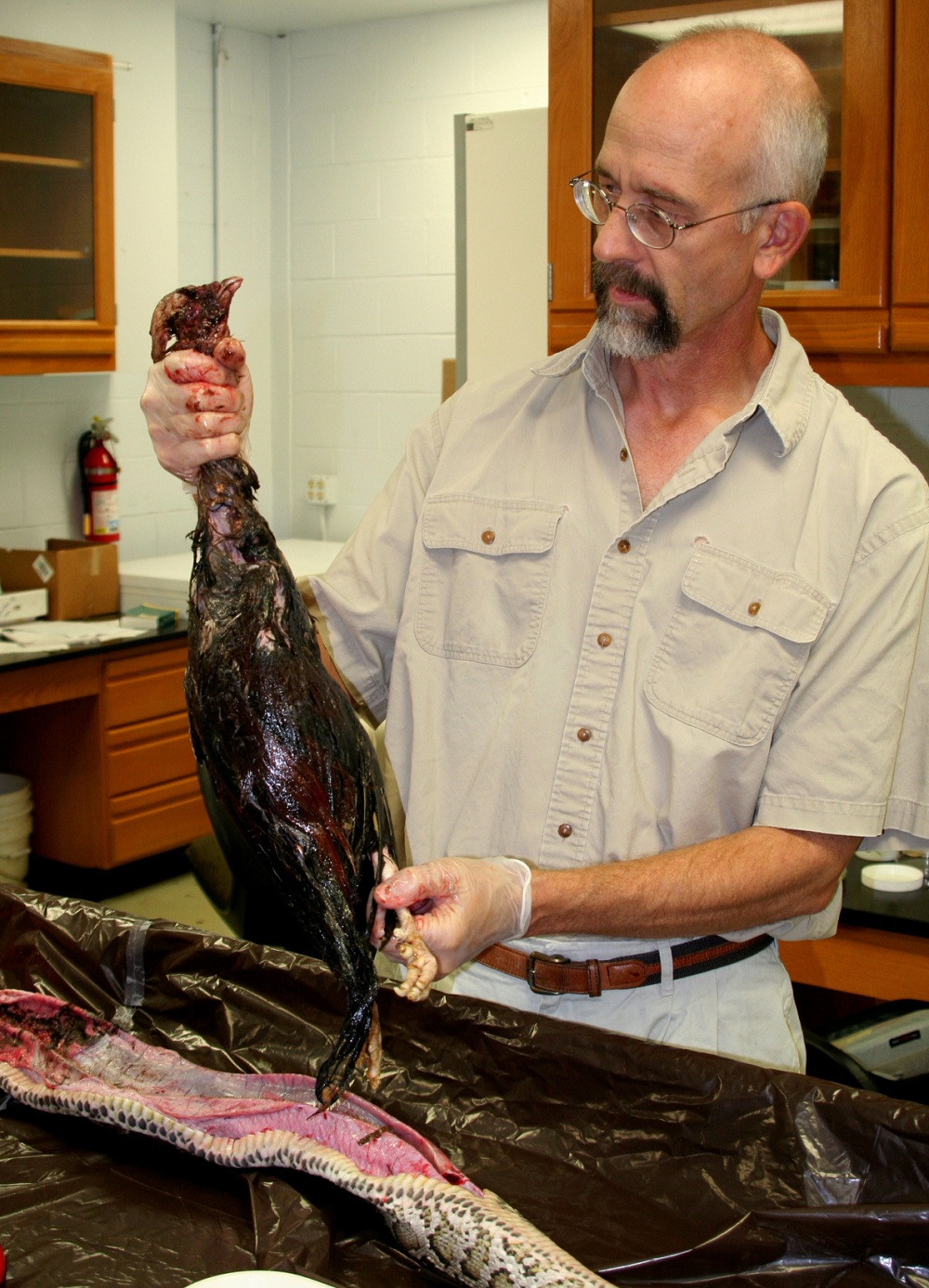'Dumped' Pythons Put Squeeze on Everglades Wildlife

Sixteen-foot-long pythons aren't just frightening movie concepts, they are a real-life threat in the Everglades where they are annihilating the park's mammal populations to unrecoverable numbers, researchers now say.
The pythons entered the park from households that kept the snakes as pets, and may also have been set loose by hurricanes in the '90s, researchers say. Rangers started noticing the python's presence in 2000, when two snakes were removed from national lands. The number of pythons has skyrocketed, with more than 300 pythons being removed from the Everglades every year since 2007. Researchers don't know their true numbers but estimate at least tens of thousands of the giant snakes inhabit the National Everglades Park.
"They turn up all over the U.S., but now they are established and reproducing and apparently doing very well in South Florida," said study researcher Michael Dorcas, of Davidson College in North Carolina. "It's 11 years later, and we are already recording a hugely devastating impact." Dorcas is co-author of the book "Invasive Pythons in the United States" (The University of Georgia Press, 2011).
Snake effects

The researchers studied records of mammal deaths on roads from 1993 to 1999, before the pythons were commonly found in the Everglades. In addition, over 51 nights in 1996 and 1997, they drove along National Park roads and tallied live and dead mammals along the road. [See photos of the invading pythons]
They compared these results with animal numbers tallied from 2003 through 2011, the time after which pythons became common. These numbers were also gleaned from more than 35,000 miles of road surveys.
In areas where pythons had been present the longest, between 2003 and 2011, populations of raccoons dropped 99.3 percent, opossums 98.9 percent and bobcats 87.5 percent. Marsh and cottontail rabbits, as well as foxes, though common before the pythons were seen in the area, were not seen at all in these surveys.
Sign up for the Live Science daily newsletter now
Get the world’s most fascinating discoveries delivered straight to your inbox.
In areas where pythons had recently taken root, the mammal decreases were smaller; in areas where pythons hadn't been spotted mammal numbers were similar to those in the Everglades' pre-python years.
Future of the Everglades

Carla Dove, a researcher at the Smithsonian Institution who wasn't involved in the study, said the results of this survey were "much worse than expected" and noted that the pythons don't just eat mammals — they can also eat birds and other reptiles (even huge alligators). Her own soon-to-be published research indicates that birds, and their eggs, are also being preyed upon by the python populations in the Everglades. [Image Gallery: Invasive Species]
While Dorcas' survey focused on common mammals, "it raises lots of disconcerting questions about [other] species that are rare and endangered," Dorcas said. "We don't yet know about those species and if similar impacts are occurring in those species as well, but it certainly warrants further investigation."
To try to limit the spread of invasive pythons, the U.S. Fish and Wildlife Service recently (finalized Jan. 17) banned the import and transport between states of the Burmese python and three other large snakes into the U.S. as pets. These regulations may be too late to save the wildlife in the Everglades, Dorcas said.
"What was most striking to me was the magnitude of the observed changes in mammal numbers," Gordon Rodda, of the U.S. Geological Survey, Fort Collins Science Center, told LiveScience in an email. "These are not incremental changes but nearly complete removal of some very key components of the Everglades ecosystem," said Rodda, who was not involved in the current study.
Snakes are hard to hunt, especially in wild areas like the Everglades, because they are extremely secretive. "It makes it really difficult to suppress their populations under most circumstances," Dorcas said.
The study was published today (Jan. 30) in the journal Proceedings of the National Academy of Sciences.
You can follow LiveScience staff writer Jennifer Welsh on Twitter @microbelover. Follow LiveScience for the latest in science news and discoveries on Twitter @livescience and on Facebook.
Jennifer Welsh is a Connecticut-based science writer and editor and a regular contributor to Live Science. She also has several years of bench work in cancer research and anti-viral drug discovery under her belt. She has previously written for Science News, VerywellHealth, The Scientist, Discover Magazine, WIRED Science, and Business Insider.










